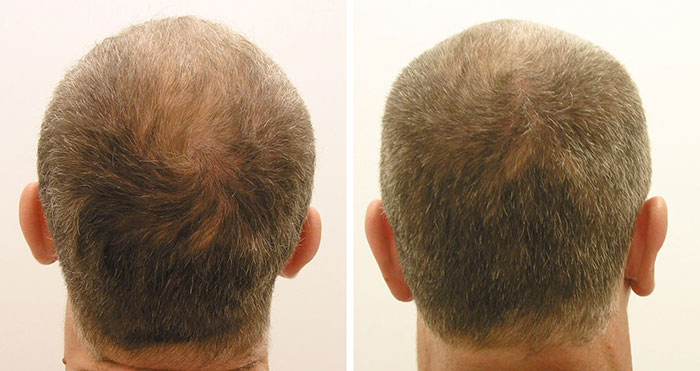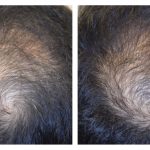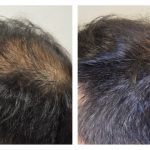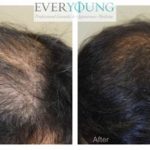
Treatment
Small injections to scalp
Recovery Time
overnight
Longevity
6-9 months
Discover the transformative power of Platelet-Rich Plasma (PRP) therapy for hair loss at Beautiphi. Our specialised PRP services harness the natural healing properties of your platelets to rejuvenate hair follicles, promoting thicker, healthier hair growth. Whether battling genetic factors, hormonal imbalances, or age-related thinning, our personalised PRP treatments offer a solution for renewed hair vitality and self-confidence. Join us on your journey to healthier, fuller hair at Beautiphi.
Causes Of Hair Loss & Hair Thinning
Hair loss can be caused by a range of factors, from hormonal imbalances, environmental and stress factors, and a depletion of stem cells. It affects approximately 70% of men by the age of 70 years, with 25% of men balding by the age of 30 years. It is usually a gradual process, with a gradual loss of thickness and strength of individual hair follicles.
PRP Treatment For Hair Loss
Platelet-rich plasma, or PRP, is concentrated blood plasma that contains approximately five times the number of platelets found in normal circulating blood. Apart from red blood cells and white blood cells, our blood also contains cells known as platelets. The function of platelets is to promote healing and aid in the clotting of blood at the site of a wound. Platelets contain growth factors that promote the regeneration of the cells in the body. PRP has been used in medicine for the last two decades.
Platelets aid in the body’s ability to heal wounds and promote cell growth. The idea behind PRP therapy is that by increasing the platelet count in a certain area, the body’s healing capacity in that area would be accelerated.
The injection of platelet-rich plasma (PRP) is a technique using the body’s own blood to heal itself. Doctors now incorporate it for the growth of thinning hair, transplanted hair, and wound healing. Many patients have benefited from this form of treatment.
PRP Procedure
The procedure takes 1-2 hours, depending on the amount of hair loss. PRP therapy is performed in 3 stages.
- First, approximately 60-100ml of blood is collected from your vein. The blood is collected by a nurse and placed in a special container. The container is then placed in a centrifuge where your blood is spun for approximately 15 minutes to separate the concentrated platelets from your normal whole blood. The PRP that contains abundant growth factors and stem cells is now ready to be applied to the scalp. The goal of this process is to increase the effects of PRP therapy on hair loss.
- The rich concentration of platelets is now applied to the scalp where hair loss has begun. Therefore, preparing the scalp to receive the PRP is necessary. For this, the scalp is stimulated to activate the wound healing process.
- Topical anesthesia is applied on the portion of the scalp where PRP will be injected. To prepare the scalp for PRP application, a special micro-needling roller device is used. This roller device causes micro-trauma to the lower layer of the scalp skin that induces other healing and growth repair cells into action. The micro-needle roller uses 192 unique needles made up of titanium that pierces into the skin and opens the skin to create micro-wounds. Since it uses low pressure, the pain is minimal. Immediately, the highly concentrated PRP is injected into these areas of the scalp.
The new rolling device product is a medical breakthrough because it causes patients much less pain than similar products used in the past.
- Occlusive dressing is then applied on the scalp and photodynamic treatment on the injected area is carried out to further enhance the effects of PRP.
Painless treatment with PRP & latest U225 gun
At Beautiphi we have purchased the speciality U225 gun with NASA technology to ensure the most painless possible treatment with PRP for your scalp, which otherwise can be an uncomfortable experience.
There are many benefits of using PRP treatment to promote healing for hair growth. Highly concentrated growth factors in the platelets have been shown to generate new hair growth, thicken thinned-out hair, and make hair transplants grow thicker and healthier.
However, not everyone is an ideal candidate to undergo this procedure. Patients who have an active infection in the scalp, a history of a viral infection like shingles, diabetes, any clotting disorder, or patients who are on blood-thinning medications like aspirin and immunosuppressive drugs like cyclosporine are not candidates for this procedure.
Also, if hair follicles are completely lost, this procedure is less likely to help patients. Patients may need to opt for hair transplant surgery.
- Since an inflammatory process is initiated at the wound site, there may be mild pain or discomfort felt by the patient at the site where PRP is injected.
- Patients are advised not to take any anti-inflammatory medication, since it may interfere in the natural healing process of PRP.
- You can return to your normal activity almost immediately, but your scalp needs protection from the sun and excessive irritation.
The results of PRP-based therapy can vary based on the type of procedure being undertaken. Generally, PRP can stimulate the healing process of facial and body tissue. Most of the clinics practicing this therapy have reported an almost 80% success rate.
- PRP can reduce inflammation so as to improve texture and even out skin tone.
- When used cosmetically, PRP can increase collagen production, leading to smoother skin and a more youthful appearance.
- In addition, it has proven helpful in treating hair-thinning conditions such as alopecia by encouraging hair growth in those who suffer from it.
- There have also been reports that PRP might offer relief from certain chronic pain conditions like arthritis. While results may not be seen immediately after treatment, long-term positive outcomes are possible with follow-up sessions as directed.
FAQs On PRP
Many studies have confirmed PRP’s effectiveness in treating thinning hair and baldness, though only some have seen regrowth. However, for many suffering from early stages of hair loss localised to one or two areas on their scalp, it could be a solution to reverse baldness without surgery. PRP works by injecting platelet-rich plasma with high growth factors into thinning areas, causing the scalp to become healthier and stimulating new hair follicle formation.
Hair loss also affects approximately 50% of women by the age of 70 years. This can have a huge psychological impact on these individuals. This can also be managed with a variety of medical, hormonal, and stem-cell therapies. Stacey works with New Zealand’s top hair specialists to detail an individualized programme to manage and treat your hair loss.
The injected area may have mild swelling or it may even be tender to touch. Swelling should go away within a few hours after the procedure while tenderness may go away in a couple of days. There is a possibility of the area getting infected, but this is rare.
PRP does not pose any danger of allergy, hypersensitivity, or foreign-body reaction and it is a safe choice for many patients.
ACell (Matri-stem) has been mixed with PRP (Platelet Rich Plasma) by many cosmetic surgeons as a form of treatment for specific hair loss candidates to slow down genetically-induced hair loss and other types of hair loss that include thinning of hair.
ACell is a by-product of the urinary bladder tissue of pigs that is stripped of all of its cells before. It has remarkable regenerative properties and works by recruiting huge numbers of adult stem cells to the site of injury. It provides growth factors and proteins necessary for tissue regeneration. It does not require the harvesting of tissue, but PRP is harvested into the tissue. A premixed combination of PRP and Acell is thought to both prevent loss and regenerate hair in people facing genetic hair loss.
Acell is available in powder form, and when mixed with PRP, it is injected into the affected scalp. This combination acts like a hair evolution accelerator.



